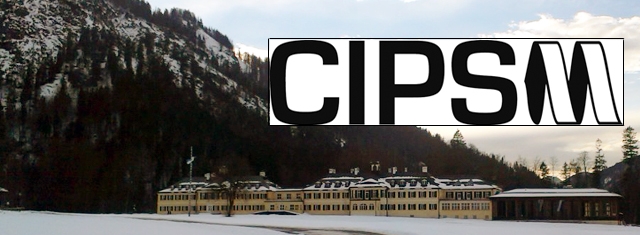News
Protein science conference in Munich
Latest news from the annual meeting 2014

Educational Center Wildbad-Kreuth in Bavaria (Source: photographer Kristina Popova)
USPA NEWS -
For almost 4 days Educational Center Wildbad-Kreuth was filled with intellectual buzz. Hundreds of scientists from the major research institutions of Munich presented their latest discoveries at the annual meeting of the Center for Integrated Protein Science Munich (CIPSM).
Anti-cancer Vaccines
Creating vaccines against cancer cells may become easier with the new molecules synthesized in the laboratory of Anja Hoffmann-Röder at Ludwig-Maximillians University Munich. The scientists chemically modified MUC1-glycopeptides ““ the molecules found selectively on the surface of cancer cells ““ so they can now be used to produce a vaccine against tumor cells. Unlike similar molecules used up to now, the new compounds have a higher stability and immunogenicity thus yielding more antibodies. The finding might make the production of anti-cancer vaccines less expensive and more efficient.Help your body fight it
Breakthrough of the Year for 2013, cancer immunotherapy is a rapidly developing field involving many laboratories around the world. Stefan Endres and his group from Klinikum of Ludwig-Maximillians University Munich are genetically modifying T-helper cells which are naturally involved in immune response in humans and make them efficiently fight cancer cells. Cancer cells have a way to shut down the immune response by binding to PD-1 receptor on the surface of T-helpers and activating a sequence of chemical signals which leads to the death of T-cells.
The researchers combined PD-1 molecule with another receptor, CD28, which instead of cell death induces proliferation and growth of the T-cells. Binding to cancer cells through this chimeric receptor causes an increased immune response and in 5 out of 8 mice with pancreatic cancer the tumor was rejected and animals were cured.
The group has also developed another method of T-cell therapy against gastric cancer which they intend to publish soon.
The group has also developed another method of T-cell therapy against gastric cancer which they intend to publish soon.
All human proteins
A draft of the human proteome as they call it, was developed by the group of Bernhard Küster at Technical University Munich. The database that contains information about 90% of proteins found in humans has been made publicly available at ProteomicsDB.org. As it turns out, the major portion of human proteome is presented by regulators of gene expression, histones. About 5% of proteins are only expressed in certain cell types, distinguishing, for example, a normal cell from a cancer cell in the body. The other 95% of identified proteins have similar levels in all our tissues. Researchers were surprised as they realized how only little differences in protein levels can lead to such variety of cell types in the human body.Giving a hand to drug designers
A better algorithm for protein-protein docking, a method widely used in drug design, was created by the group of Martin Zacharias at Technical University Munich. Usually, to make the calculations faster, programs present both protein partners as completely rigid bodies.In a new program i-ATTRACT created by Christina Schindler, a part of the bigger molecule that binds to its partner is allowed to be flexible and move as protein structures would naturally do, without a significant increase in computation time. At the core of the program is a new algorithm ATTRACT presenting protein structures in a simplified form and rated as one of the best performing methods in the field according to the European Bioinformatics Institute.
The Photo-Switchables
Back in 2007, the group of Wolfgang Zinth from Ludwig-Maximilians University Munich constructed a light-switchable hairpin peptide ““ a structure similar to those that naturally occur in proteins. In their recent work the researchers looked closely at how their model unfolds and refolds. They observed that a sudden increase in temperature switches azobenzene molecule at the center of the hairpin into a trans-state, thus opening up the structure. Illuminating the hairpin with violet light afterwards induces a reverse effect and hairpin returns into its compact folded state. Researchers believe that inserting such photoresponsive elements into proteins may help them in understanding the basic steps of how proteins fold.Lighting up the fish brain
Dominique Foerster and other members of the group of Herwig Baier in Max-Planck Institute of Neurobiology developed a new system that allows them to switch on single neurons in the zebrafish brain and watch the signal passing on through the neural network. They expressed the so-called optogenetic channels in the neuronal membrane. These channels activate upon a pulse of focused laser light and “switch on“ the neurons. The signal transmission is then registered by optogenetic sensor molecules in the next cell, lighting the second cell up. The method was named Optobow and allows the scientists to selectively activate and observe different patterns of the fish behavior.
Liability for this article lies with the author, who also holds the copyright. Editorial content from USPA may be quoted on other websites as long as the quote comprises no more than 5% of the entire text, is marked as such and the source is named (via hyperlink).





